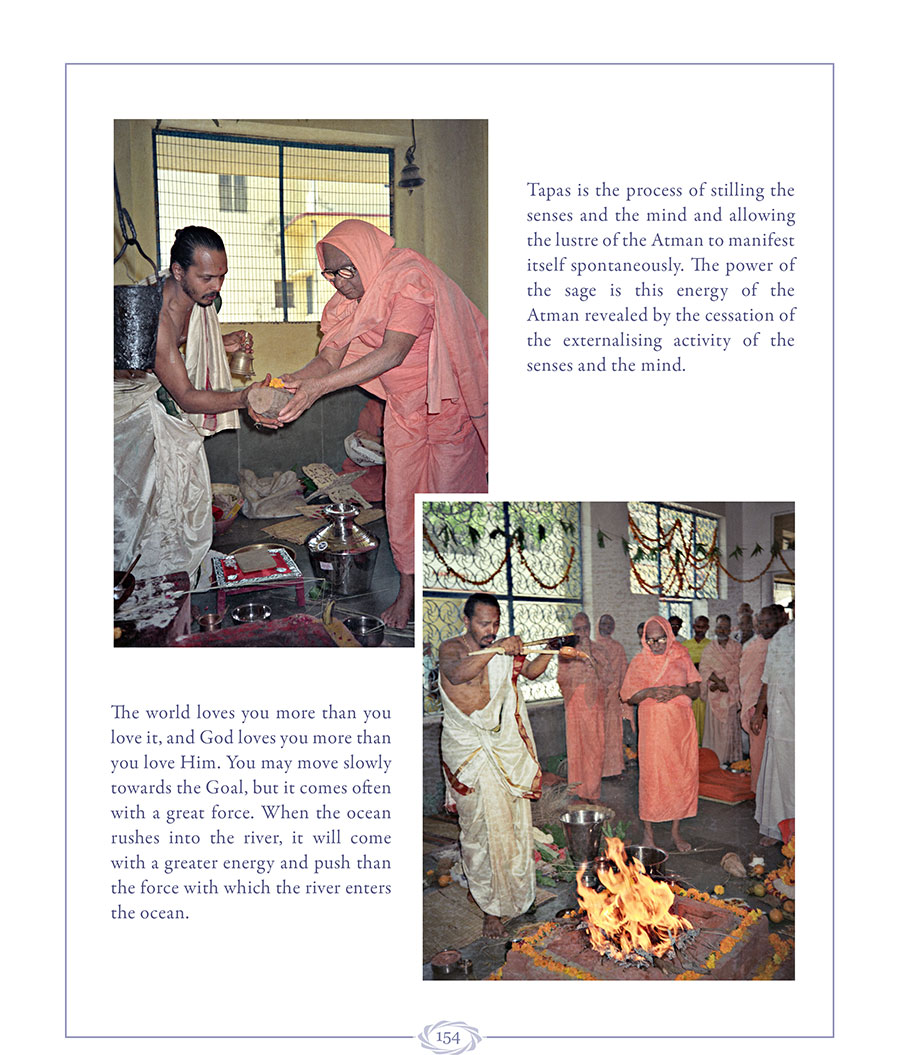Commentary on the Bhagavadgita : 50-2. - Swami Krishnananda.
========================================================================
========================================================================
Saturday, October 01, 2022. 08:30.
Discourse 50: The Eighteenth Chapter Continues – Knowing One's Duty-2.
========================================================================
Though society is stable, somehow or the other, by an administrative system that is introduced in this manner by bringing about some harmonious adjustment of capacities and intelligences, there is also a need for working out a system of inner development. It is not enough if we are merely stable socially. We also have to be perfect inwardly in our own individuality. Varna dharma, which is actually what is meant by this social group mentioned, is concerned only with external society, and ashrama dharma is concerned with ourselves. Brahmana, Kshatriya, Vaishya and Sudra are external, social, outward, whereas Brahmacharya, Grihastha, Vanaprastha and Sannyasa refer to the inward graduated ascent of the spirit to higher and higher dimensions of comprehension.
These two have to go together. Socially we are involved in a particular location, and we have to work and contribute our might for the welfare of society in accordance with our placement, location or situation in which we find ourselves or for which we are fitted in society. Together with that, we also have to work for our development. The four stages of inner development, known as ashrama dharma, are Brahmacharya, Grihastha, Vanaprastha and Sannyasa.
In the early stages, for about twenty-five years at least, a person lives a life of utter self-restraint and study, under a teacher. The parents do not, according to the ancient system at least, allow their sons to remain at home when they come of age for education and study. When a person comes of age for education, he is sent out to a teacher, and he is supposed to be there for at least twelve years, if not more, as the case may be. This Brahmacharya stage of self-restraint and service to the Guru, and study of the Vedas particularly, is supposed to be a foundation that is being laid for one's personal life. What we have been in our early years will tell upon us in our later years. What were we doing for the first twenty or twenty-five years? What kind of life did we live? That will have a direct impact upon our life after fifty or sixty years of age. The energetic, disciplined, hard life that we lived early on will bear fruit which we can reap towards the end of our life. But if in our early years we have lived a dissipated, carefree life, without any kind of discipline whatsoever, it will have a very deleterious effect when we grow old. That is why it has been always prescribed that early years should be of complete control, complete discipline—biological, psychological and physical—apart from the social involvement already mentioned as varna dharma.
After this stage of Brahmacharya, one usually enters into household life, because that is supposed to be a stage where one learns the ways of life. The world is made up so many complicated involvements. The isolated life of a Brahmacharin is good for conserving energy and making one strong enough to face life, but one must know what life is. One gains knowledge of life by living a socially construed family life, into which one is generally introduced after the Brahmacharya stage is over. But when one comes to maturity of experience—where the hair turns grey, as it were—there is a necessity to withdraw oneself from too much concern over family affairs or even social affairs, and a desire should arise inwardly to look to the need for a higher kind of living, what may be called spiritual living. Then one lives a secluded life. This stage is called Vanaprastha life. It is not actually total renunciation like a Sannyasin, but it is isolated, secluded living, away from the family atmosphere. One may live in a temple or in an ashrama for some time, and then go back to the family, and then again go for retreat, thus habituating oneself to a life of non-involvement in family life. That continues for some time.
Usually, the expectation is that one should live a life of Brahmacharya for twenty-five years, a life of Grihastha for another twenty-five years, Vanaprastha for the third twenty-five years, and Sannyasa for the last twenty-five years. But considering the age limit of people these days and there being no standard hope of everybody living one hundred years, we have to limit the duration of the stages mentioned according to the circumstances. Nevertheless, the stages are valid even today, and in connection with this kind of internal and external discipline, the Bhagavadgita goes into these brief statements of Brahmana, Kshatriya, Vaishya and Sudra.
*****
To be continued ...
========================================================================







Comments
Post a Comment